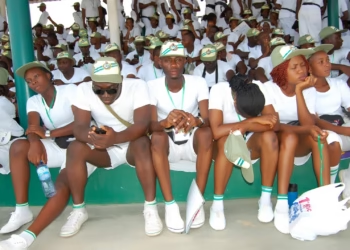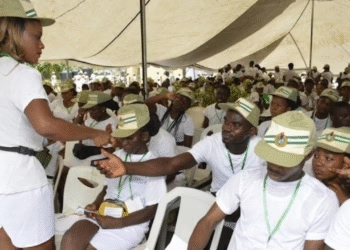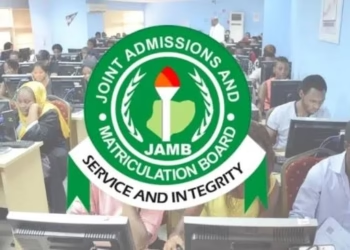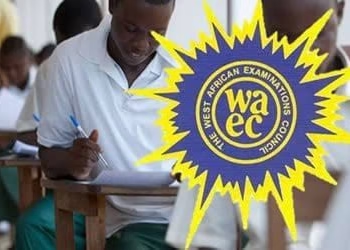The Federal Government just launched something ambitious. Inspire Live, an online classroom platform that promises to deliver live classes to every Nigerian secondary school student from 8am to 2:30pm, Monday through Friday. On paper, it sounds brilliant. In reality, it faces challenges that could make or break the entire initiative.
According to Punch, the Federal Ministry of Education described this as a groundbreaking programme designed to expand equitable access to quality learning for every Nigerian child. The classes are delivered by certified master teachers using Cisco Webex, covering subjects from Basic Science and Mathematics to Technical Drawing and Automobile Mechanics.
But here’s the question nobody’s asking loudly enough: Can this actually work in Nigeria? Let’s be honest about the massive infrastructure gaps, connectivity challenges, and practical realities that stand between this ambitious plan and actual implementation.
The Teacher Shortage Crisis This Aims to Solve
First, let’s understand why FG launched this platform. Nigeria has a serious teacher shortage problem. The ministry acknowledged that the initiative was created to address long-standing challenges in the education sector, including shortages of qualified teachers and disruptions to learning.
Walk into many Nigerian secondary schools, especially in rural areas, and you’ll find classrooms without teachers for critical subjects like Physics, Chemistry, or Mathematics. Students sometimes go entire terms without proper instruction in these subjects because qualified teachers simply aren’t available or affordable.
The Inspire Live platform attempts to solve this by centralizing quality teachers. Instead of every school needing its own Physics teacher, students across Nigeria can learn from the same excellent Physics teacher streaming live. In theory, this democratizes access to quality education. A student in a remote village in Zamfara can receive the same quality instruction as one in an expensive Lagos private school.
This model has worked elsewhere in the world. Countries like India and Kenya have successfully deployed online learning platforms that reached millions of students. But those countries also invested heavily in the infrastructure to make it possible. Which brings us to Nigeria’s biggest challenge.
The Internet Connectivity Reality Check
Here’s where things get difficult. For Inspire Live to work, schools need internet. Not occasional, slow internet. Reliable, fast internet that can stream video lessons for hours every weekday.
Current data shows that Nigeria’s digital infrastructure is still developing. The World Bank approved $500 million for the Building Resilient Digital Infrastructure for Growth project, which aims to connect 38,800 public schools to broadband. But this project is just beginning, and the timeline stretches years into the future.
As of April 2025, internet penetration in Nigeria stood at just under 49 percent, far short of the 70 percent broadband target set for this year. This means more than half of Nigeria still lacks reliable internet access.
Even more concerning, research reveals that in January 2025, about 27 million Nigerians have no access to telecom infrastructure at all, excluding those who can’t afford it. If people don’t have basic telecom access, how will their schools stream live classes?
The geographic divide is stark. Urban schools in Lagos, Abuja, and Port Harcourt might have the connectivity needed for this initiative. But rural schools, where teacher shortages are most severe and where this platform would be most valuable, often lack even basic electricity, let alone reliable high-speed internet.
UNICEF’s initiative in Nigeria has extended internet infrastructure to only 1,187 underserved communities so far. That’s progress, but Nigeria has thousands of communities needing connectivity. The gap between what exists and what’s needed for nationwide online learning is enormous.
The Device and ICT Infrastructure Gap
Internet connectivity is just the first hurdle. Schools also need devices for students to watch these classes. Punch reported that the ministry instructed states to ensure designated schools are equipped with basic ICT facilities and internet connectivity.
“Ensure designated schools are equipped” sounds simple on paper. In practice, it’s expensive and complicated. How many Nigerian public schools currently have computer labs with working computers? How many have projectors and screens for group viewing? How many have the power supply to run these devices for 6.5 hours daily?
Walk into the average Nigerian public secondary school and you’ll find classrooms with broken chairs, leaking roofs, and no electricity. Now imagine expecting those same schools to suddenly have functional computer labs with stable power and high-speed internet.
Recent initiatives show the scale of the challenge. The Federal Government launched a scheme to provide 8,000 teachers with mobile devices and free data. That’s for 8,000 teachers out of hundreds of thousands nationwide. It’s a pilot program running from December 2025 to July 2026, showing that even basic device distribution is still in experimental stages.
If the government struggles to provide devices to 8,000 teachers, how will it ensure that thousands of schools have the multiple devices needed for hundreds of students to participate in online classes simultaneously?
The Electricity Problem Nobody Talks About Enough
Here’s something that often gets overlooked in discussions about digital education: electricity. You can’t stream online classes without power, and Nigeria’s electricity situation is well-documented.
Many schools experience frequent power cuts. Some rural schools have no grid electricity at all. Generators are expensive to run, especially for 6.5 hours daily, five days a week. Solar power systems are costly upfront investments that most underfunded public schools cannot afford.
Even in areas with relatively stable electricity, power can cut out mid-lesson, disrupting learning and frustrating both students and teachers. Imagine a Physics teacher explaining a complex concept when suddenly the power dies and students lose connection. By the time power returns, the lesson has moved on and students have missed critical content.
This isn’t a hypothetical concern. It’s daily reality for millions of Nigerian students and schools.
Affordability: The Hidden Barrier
The Inspire Live platform might be free, but access isn’t. Schools that lack ICT infrastructure need to invest in it. That costs money. Internet subscriptions cost money. Electricity to power devices costs money. Maintaining equipment costs money.
Data shows that the median price of an entry-level mobile broadband plan (2GB per month) was 4.2% of gross national income per capita in 2024, still more than double the United Nations Broadband Commission’s affordability target of 2%. This makes it the highest among all ITU regions.
If internet is unaffordable for individual Nigerians, how will underfunded public schools, especially in poor communities, sustain the ongoing costs of high-speed internet sufficient for streaming video classes daily?
The World Bank’s investment aims to eventually address this through a fiber network that will bring connectivity to schools. But this infrastructure rollout takes years, and the project is just beginning. In the meantime, schools need to figure out how to pay for internet themselves, which many simply cannot afford.
What Success Would Actually Look Like
Let’s be fair. Despite these challenges, the Inspire Live initiative isn’t doomed to failure. Success is possible, but it requires acknowledging reality and planning accordingly.
Countries like Kenya have successfully implemented similar platforms. Research on digital education shows that with proper infrastructure investment, digital learning platforms can dramatically improve educational outcomes, especially for students in underserved areas.
For Inspire Live to succeed in Nigeria, several things need to happen:
Phased, Realistic Implementation: Don’t try to reach every school immediately. Start with schools that actually have the necessary infrastructure, learn from that experience, and expand gradually as connectivity improves nationwide. According to Punch, expansion is set to cover all classes from Primary 1 to Senior Secondary 3, but this should follow infrastructure readiness, not arbitrary timelines.
Massive Infrastructure Investment: The World Bank’s $500 million for digital infrastructure is a good start, but more is needed. The target is to deploy over 90,000 kilometers of fiber optic cable, extending the national backbone from 35,000 to 125,000 kilometers. This must be fast-tracked specifically for schools.
Alternative Delivery Methods: In areas without reliable internet, consider alternative approaches. Pre-recorded lessons on USB drives or SD cards that work offline. Radio-based lessons for rural areas. Mobile vans with satellite internet that visit schools weekly. Don’t let perfect internet be the enemy of any education.
Teacher Training and Support: Recent government initiatives show recognition that teachers need digital skills. The program providing 8,000 teachers with devices and training is essential, but needs to scale to hundreds of thousands of teachers who will support students using Inspire Live.
Blended Learning Approach: Online classes shouldn’t replace physical teachers entirely. The best model is blended learning where online instruction supplements rather than replaces classroom teaching. Local teachers can use Inspire Live lessons as resources while still providing in-person support, discussion, and clarification.
Community Viewing Centers: In communities where schools lack facilities, establish community viewing centers where multiple schools can send students to watch classes together. This is more efficient than trying to equip every individual school.
The Honest Assessment
So can Nigeria’s online school platform work? The answer is: Yes, but not immediately and not everywhere.
In well-equipped urban schools with reliable internet and electricity, Inspire Live can work right now. These schools can benefit immediately from access to quality teachers across all subjects.
In semi-urban schools with basic infrastructure but inconsistent connectivity, it can work with some investment and patience. These schools might experience interruptions and challenges but can still gain value from the platform.
In rural schools without electricity, internet, or basic ICT infrastructure, Inspire Live won’t work anytime soon unless massive infrastructure investments happen first. For these schools, which ironically need the platform most, promising online education without first providing the basics is setting up false expectations.
The initiative’s success depends entirely on honest assessment of where Nigeria currently stands infrastructurally and realistic planning for phased implementation. Launching nationwide without ensuring schools have what they need risks creating another well-intentioned program that fails due to poor execution.
Infrastructure development is happening. The Broadband Alliance and Project 774 LG Connectivity aim to connect all 774 local government secretariats to internet and position them as resource centers. But these are multi-year projects, not immediate solutions.
What Parents and Students Should Do
If you’re a parent or student eager to benefit from Inspire Live, here’s practical advice:
Check your school’s current ICT capability. Does it have internet? Working computers or projectors? Reliable electricity? If yes, encourage your principal to register for the program through the official Inspire support channels.
If your school lacks infrastructure, organize with other parents and school management to explore alternatives. Can the school partner with nearby cyber cafés or community centers with better connectivity? Can parents contribute to a school internet fund?
Don’t wait passively for the government to solve everything. While infrastructure investment happens, explore other online learning resources. Platforms like Khan Academy work offline. YouTube educational videos can be downloaded and watched without streaming. Find ways to access quality education content now while larger infrastructure projects develop.
For students, develop digital literacy skills regardless of your school’s current capability. Learn to use computers, navigate online platforms, and manage digital learning. These skills will be valuable whether Inspire Live works at your school or not.
The Bottom Line
The Inspire Live initiative represents an important recognition that Nigeria’s education system needs innovation to address teacher shortages and quality gaps. Using technology to democratize access to excellent teachers is the right vision.
But vision without infrastructure is just aspiration. Nigeria’s current internet penetration at 49%, with 27 million people lacking any telecom access, means that more than half the country can’t reliably participate in online learning yet.
This doesn’t mean FG should abandon Inspire Live. It means implementation must be honest about current limitations, focused on schools that can actually use it now, and paired with aggressive investment in the infrastructure needed for eventual nationwide coverage.
Success stories from other countries show that digital education platforms can transform learning outcomes. But those countries invested in infrastructure first or implemented gradually as infrastructure developed. Nigeria must do the same.
The question isn’t whether online education can work in Nigeria. It absolutely can. The question is whether we’re willing to make the investments needed for it to work everywhere, or if this becomes another government initiative that works great for privileged urban students while leaving behind the rural students who need it most.
For now, Inspire Live is a promising start with massive challenges ahead. Watch this space. The next few months will show whether the government’s commitment extends beyond launching platforms to actually ensuring schools can use them.











